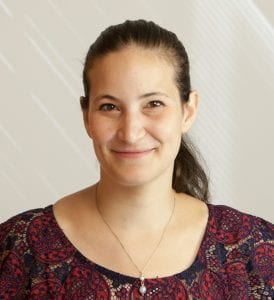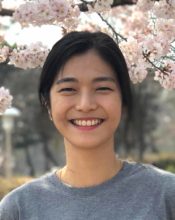Two projects led by USC Leonard Davis School of Gerontology researchers will explore the relatively understudied intersections between the female reproductive system and aging.
Assistant Professor Bérénice Benayoun and postdoctoral fellow Min Hoo Kim have both received research grants from the Global Consortium for Reproductive Longevity and Equality (GCRLE), an initiative of the Buck Institute for Research on Aging. Providing $7.4 million in funding to 22 researchers across the globe, this year’s grants are the consortium’s first-ever awards.
“We are thrilled to welcome these promising researchers as our very first grant recipients.” said Jennifer Garrison, GCRLE faculty director and assistant professor at the Buck Institute for Research on Aging. “The GCRLE unites two disciplines – reproductive science and geroscience – in an unprecedented way to investigate an area of biology that has tangible societal and clinical implications. Our goal is to foster truly bold, innovative scientists with the potential to transform the field. Beyond funding, we are building an infrastructure to grow a vibrant community and developing creative programs to break down gender barriers in scientific research careers. This is the beginning of something big!”
The GCRLE was created to support research, training, infrastructure and collaboration centered on understanding why women’s reproductive capacity ends in menopause and how it affects health and longevity.
“Beyond reproduction, the end of fertility sets off a cascade of negative health effects in a woman’s body,” according to The Unspoken Truth, a white paper published by the GCRLE. “As a society, every aspect of a woman’s life is influenced by the fact that her reproductive capacity is limited—overall health, family planning, career decisions. Despite its profound impact on women’s health and well-being, female reproductive aging is an understudied topic.”
Accurately Modeling Menopause

Assistant Professor Berenice Benayoun
Assistant Professor of Gerontology Bérénice Benayoun received one of the four inaugural GCRLE Junior Scholar Awards to support her development of age-relevant mouse models of menopause. Aging female mice don’t experience true menopause but undergo estropause, after which the mice still steadily express estrogen but at very low levels. To simulate human-like menopause for aging research, researchers typically remove the mice’s ovaries, but this results in a rapid loss of all estrogen, instead of the fluctuation and eventual decline in expression found in true menopause.
Benayoun will explore three avenues to producing a true mouse model of menopause, and two of the models involve targeting the expression of specific genes, FoxL2 and FSHR. Engineering mice to be haploinsufficient, or possessing only half of the normal number of healthy copies, in either of these genes results in lower reproductive function that may mimic menopause.
Another promising technique involves administering multiple injections of 4-vinylcyclohexene diepoxide, or VCD. In earlier studies, after a 15-day course of VCD injections, mice underwent ovarian failure with hormonal changes reminiscent of peri- and post-menopause, including fluctuating estrogen that then decreased to undetectable levels.
If, after careful characterization of the mice’s tissues and hormone fluctuations, one or more of these techniques results in a more accurate model of menopause, it will provide a powerful new tool in researching female aging and age-related disease, Benayoun said.
How Menopause and Microbes Interact

Postdoctoral Scholar Min Hoo Kim
Postdoctoral fellow Min Hoo Kim, a member of Benayoun’s laboratory who received one of the eight inaugural GCRLE Postdoctoral Scholar Awards, will study the impact of the microbiome on reproductive aging. The microbiome – the vast collection of bacteria living in and on an animal – has been found to have profound effects on health, including on ovarian health, in previous research.
Kim’s project will investigate whether samples of microbes taken from mice in varying states of pre-, peri- and post-menopause (as induced by VCD injections) as well as microbes from naturally post-estropausal mice induce reproductive changes when grafted into young, healthy female mice. Following the grafts, she will examine the recipient mice to identify how the microbiome changes affect ovarian tissues and hormone levels.
“As gut microbiota can be relatively easily manipulated, findings from this study will open doors to novel methods to delay ovarian aging and/or mitigate its effects,” Kim said.
About the GCRLE
The GCRLE is anchored at the Buck’s Center for Female Reproductive Longevity and Equality, which was established in 2018 with a gift from attorney and entrepreneur Nicole Shanahan. The Center is the first research facility in the world focused solely on reproductive equality and ovarian aging, a key determinant not only of fertility but of overall health and longevity. The GCRLE was established in 2019 with a gift from Shanahan’s Bia-Echo Foundation to build the global ecosystem for this new and exciting field of research.
Additional content courtesy of the Global Consortium for Reproductive Longevity and Equality.





